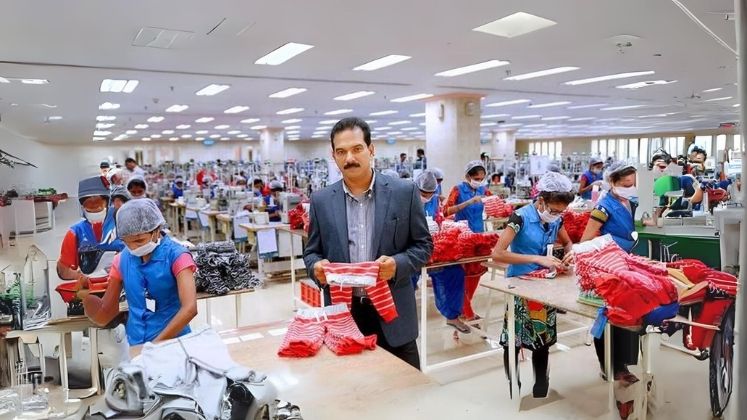
Premier garment manufacturer Kitex Garments Limited is all set to launch its operations in Telangana, beginning with the first phase scheduled for next March.
To produce around 22 lakh garments every day, the business is pouring Rs. 3,000 crore into its operations in Warangal and Sitarampur, Hyderabad.
With Kitex alone set to employ 50,000 people by December of next year, the shift is predicted to generate enormous job opportunities in the industry. Women will make up around 80 per cent of the employed workforce.
In an interview with Telangana Today, Sabu M. Jacob, managing director of Kitex Garments Limited, expressed optimism about Telangana’s potential as a destination for the textile industry. He highlighted the favourable climate for the industrial sector and credited the State’s stable government and capable leadership for the company’s choice to establish operations there.
“We found Telangana to be a perfect environment for expanding our operations and hence, decided to invest Rs. 1,000 crore within six hours after landing here. After witnessing the industry-friendly system, able workforce and resources including uninterrupted power supply, we enhanced our investment to Rs. 3,000 crore,” he said.
In Telangana, Kitex intends to build the longest manufacturing plant in the world. The three longest buildings, each measuring 1,350 metres, will be found in the Sitarampur plant. Together, they will make up a 4 kilometre industrial complex.
Jacob stated that the company intends to manufacture clothing solely for the US export market out of its 250-acre Sitarampur plant and its 185-acre Warangal unit. This production will generate a significant amount of foreign cash, approximately Rs. 4,000 crore, each year. According to him, the Kitex Group intends to use 12–15 per cent of Telangana’s total cotton production for its own purposes, which will help thousands of farmers. He claimed that in spite of its excellent quality, Telangana’s cotton production did not receive the credit it deserved because there were insufficient spinning mills and textile factories.
His business intended to build a fully automated cotton processing machine as part of its complex.






